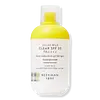What's inside
What's inside
 Key Ingredients
Key Ingredients

 Benefits
Benefits

 Concerns
Concerns

 Ingredients Side-by-side
Ingredients Side-by-side

Butyl Methoxydibenzoylmethane 3%
UV AbsorberHomosalate 15%
Skin ConditioningEthylhexyl Salicylate 5%
UV AbsorberOctocrylene 10%
UV AbsorberIsododecane
EmollientDimethicone/Bis-Isobutyl PPG-20 Crosspolymer
EmollientButyloctyl Salicylate
Skin ConditioningC12-15 Alkyl Benzoate
AntimicrobialCaprylic/Capric Triglyceride
MaskingDimethicone/Vinyl Dimethicone Crosspolymer
Skin ConditioningCaprylyl Methicone
Skin ConditioningTocopheryl Acetate
AntioxidantPongamia Glabra Seed Oil
Skin ConditioningOryza Sativa Bran Extract
Skin ConditioningSilica
AbrasiveHelianthus Annuus Extract
EmollientTocopherol
AntioxidantRosmarinus Officinalis Leaf Extract
AntimicrobialDunaliella Salina Extract
Skin ConditioningHaematococcus Pluvialis Extract
AntioxidantCaprae Lac
Skin ConditioningCocos Nucifera Fruit Extract
EmollientLactobacillus/Rice Ferment
Skin ConditioningMaltitol
HumectantArginine
MaskingButyl Methoxydibenzoylmethane 3%, Homosalate 15%, Ethylhexyl Salicylate 5%, Octocrylene 10%, Isododecane, Dimethicone/Bis-Isobutyl PPG-20 Crosspolymer, Butyloctyl Salicylate, C12-15 Alkyl Benzoate, Caprylic/Capric Triglyceride, Dimethicone/Vinyl Dimethicone Crosspolymer, Caprylyl Methicone, Tocopheryl Acetate, Pongamia Glabra Seed Oil, Oryza Sativa Bran Extract, Silica, Helianthus Annuus Extract, Tocopherol, Rosmarinus Officinalis Leaf Extract, Dunaliella Salina Extract, Haematococcus Pluvialis Extract, Caprae Lac, Cocos Nucifera Fruit Extract, Lactobacillus/Rice Ferment, Maltitol, Arginine
Octocrylene 10%
UV AbsorberHomosalate 7%
Skin ConditioningEthylhexyl Salicylate 5%
UV AbsorberButyl Methoxydibenzoylmethane 3%
UV AbsorberWater
Skin ConditioningButyloctyl Salicylate
Skin ConditioningGlycerin
HumectantCandelilla/Jojoba/Rice Bran Polyglyceryl-3 Esters
EmulsifyingCoco-Caprylate/Caprate
EmollientCapryloyl Glycerin/Sebacic Acid Copolymer
Skin ConditioningPropanediol
SolventGlyceryl Citrate/Lactate/Linoleate/Oleate
EmulsifyingButyrospermum Parkii Butter
Skin ConditioningGlyceryl Stearate
EmollientCetearyl Alcohol
Emollient1,2-Hexanediol
Skin ConditioningTerminalia Chebula Fruit Extract
Skin ConditioningSodium Stearoyl Lactylate
EmulsifyingSodium Polyacrylate Starch
AbsorbentBehenyl Alcohol
EmollientXanthan Gum
EmulsifyingCaprylhydroxamic Acid
Persea Gratissima Oil
Skin ConditioningMangifera Indica Seed Butter
Skin ConditioningArgania Spinosa Kernel Oil
EmollientSqualane
EmollientGoat Milk
Skin ConditioningAlgin
MaskingTheobroma Cacao Seed Butter
EmollientSodium Hyaluronate
HumectantCeramide NP
Skin Conditioning2,3-Butanediol
HumectantHydrogenated Lecithin
EmulsifyingLactic Acid
BufferingPhyllanthus Emblica Fruit Extract
HumectantSodium Benzoate
MaskingPotassium Sorbate
PreservativeCholesterol
EmollientCeramide Ns
Skin ConditioningCeramide As
Skin ConditioningCeramide AP
Skin ConditioningCitric Acid
BufferingCeramide EOP
Skin ConditioningOctocrylene 10%, Homosalate 7%, Ethylhexyl Salicylate 5%, Butyl Methoxydibenzoylmethane 3%, Water, Butyloctyl Salicylate, Glycerin, Candelilla/Jojoba/Rice Bran Polyglyceryl-3 Esters, Coco-Caprylate/Caprate, Capryloyl Glycerin/Sebacic Acid Copolymer, Propanediol, Glyceryl Citrate/Lactate/Linoleate/Oleate, Butyrospermum Parkii Butter, Glyceryl Stearate, Cetearyl Alcohol, 1,2-Hexanediol, Terminalia Chebula Fruit Extract, Sodium Stearoyl Lactylate, Sodium Polyacrylate Starch, Behenyl Alcohol, Xanthan Gum, Caprylhydroxamic Acid, Persea Gratissima Oil, Mangifera Indica Seed Butter, Argania Spinosa Kernel Oil, Squalane, Goat Milk, Algin, Theobroma Cacao Seed Butter, Sodium Hyaluronate, Ceramide NP, 2,3-Butanediol, Hydrogenated Lecithin, Lactic Acid, Phyllanthus Emblica Fruit Extract, Sodium Benzoate, Potassium Sorbate, Cholesterol, Ceramide Ns, Ceramide As, Ceramide AP, Citric Acid, Ceramide EOP
Ingredients Explained
These ingredients are found in both products.
Ingredients higher up in an ingredient list are typically present in a larger amount.
Also known as Avobenzone, this ingredient is a chemical sunscreen filter that provides protection in the UV-A range.
Avobenzone is globally approved and is the most commonly used UV-A filter in the world.
Studies have found that avobenzone becomes ineffective when exposed to UV light (it is not photostable; meaning that it breaks down in sunlight). Because of this, formulations that include avobenzone will usually contain stabilizers such as octocrylene.
However, some modern formulations (looking at you, EU!) are able to stabilize avobenzone by coating the molecules.
Avobenzone does not protect against the UV-B range, so it's important to check that the sunscreen you're using contains other UV filters that do!
The highest concentration of avobenzone permitted is 3% in the US, and 5% in the EU.
Learn more about Butyl MethoxydibenzoylmethaneButyloctyl Salicylate is a chemical UV filter structurally similar to octisalate. It is a photostabilizer, SPF booster, emollient and solvent. This ingredient helps evenly spread out ingredients.
According to a manufacturer, it is suitable for pairing with micro Titanium Dioxide, Zinc Oxide, and pigments.
Photostabilizers help stabilize UV-filters and prevents them from degrading quickly.
Learn more about Butyloctyl SalicylateEthylhexyl Salicylate is an organic compound used to block UV rays. It primarily absorbs UVB rays but offers a small amount of UVA protection as well.
Commonly found in sunscreens, Ethylhexyl Salicylate is created from salicylic acid and 2-ethylhexanol. You might know salicylic acid as the effective acne fighter ingredient and BHA.
The ethylhexanol in this ingredient is a fatty alcohol and helps hydrate your skin, similar to oils. It is an emollient, which means it traps moisture into the skin.
According to manufacturers, Ethylhexyl Salicylate absorbs UV wavelength of 295-315 nm, with a peak absorption at 307-310 nm. UVA rays are linked to long term skin damage, such as hyperpigmentation. UVB rays emit more energy and are capable of damaging our DNA. UVB rays cause sunburn.
Learn more about Ethylhexyl SalicylateHomosalate is a chemical sunscreen filter that provides protection in the UV-B range (280nm - 320 nm), with a peak protection at 306 nm. It is internationally approved for use in sunscreens.
Homosalate is not photo-stable, meaning it's strength as a UV filter degrades over time with exposure to the sun. Because of this, it's often used in combination with other chemical sunscreen filters as avobenzone (which protects from the UV-A range). Homosalate also helps act as a solvent for harder-to-dissolve UV filters.
(Part of the reason that sunscreens need to be frequently re-applied is due to the photo instability of many chemical sunscreen filters)
Currently, homosalate is approved in concentrations up to 10% in the EU and 15% in the US. The FDA is currently doing further research on the effects of homosalate, and it is possible that these approved concentrations will change in the future.
Learn more about HomosalateOctocrylene protects skin from sun damage. It absorbs UV-B with peak absorption of 304 nm. It is a common sunscreen ingredient and often paired with avobenzone, a UVA filter. This is because octocrylene stabilizes other sunscreen ingredients by protecting them from degradation when exposed to sunlight. Octocrylene is a photostable ingredient and loses about 10% of SPF in 95 minutes.
Octocrylene also acts as an emollient, meaning it helps skin retain moisture and softens skin. It is oil-soluble and hydrophobic, enhancing water-resistant properties in a product.
Those who are using ketoprofen, a topical anti-inflammatory drug, may experience an allergic reaction when using octocrylene. It is best to speak with a healthcare professional about using sunscreens with octocrylene.
The EU allows a maximum of these concentrations:
Learn more about Octocrylene